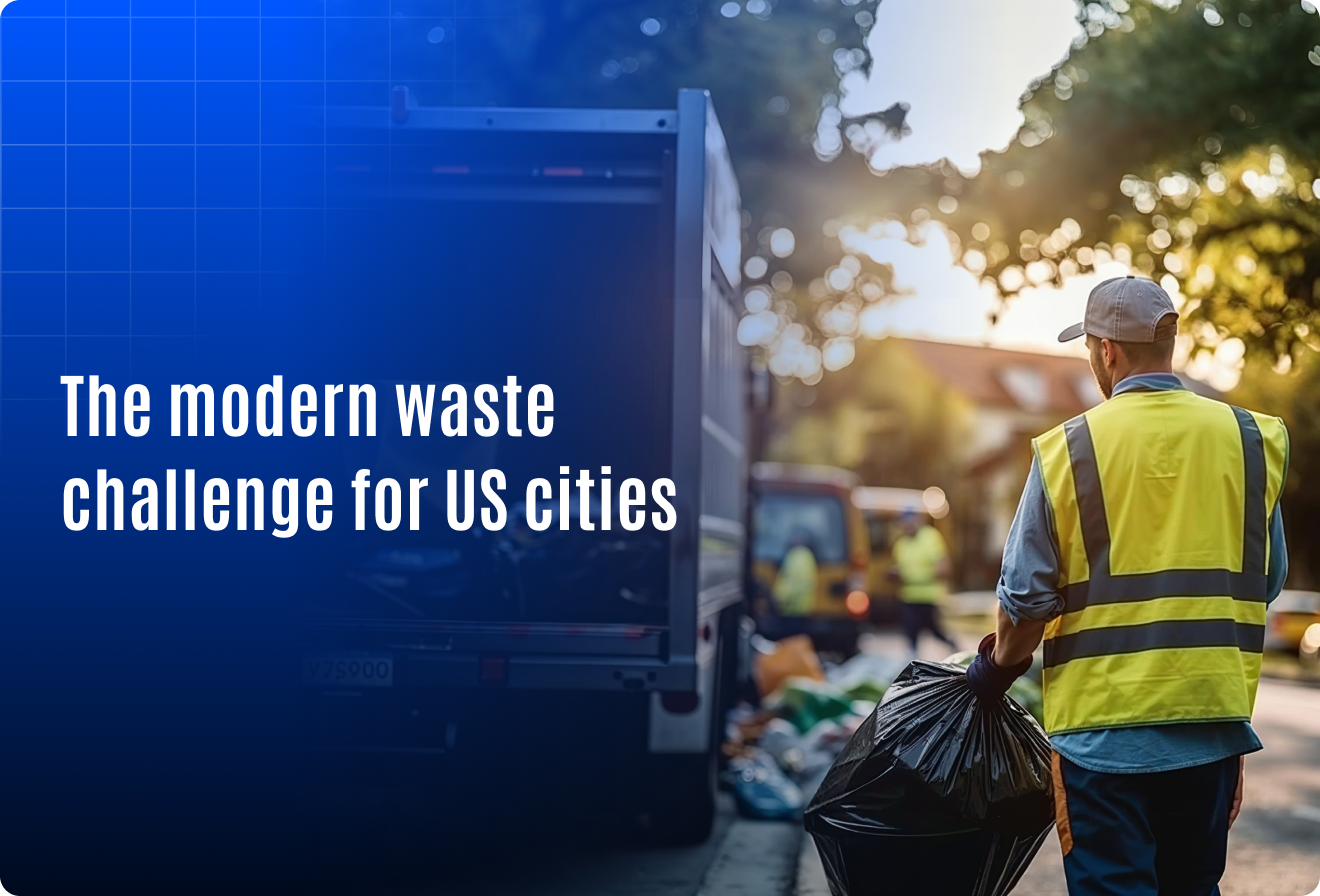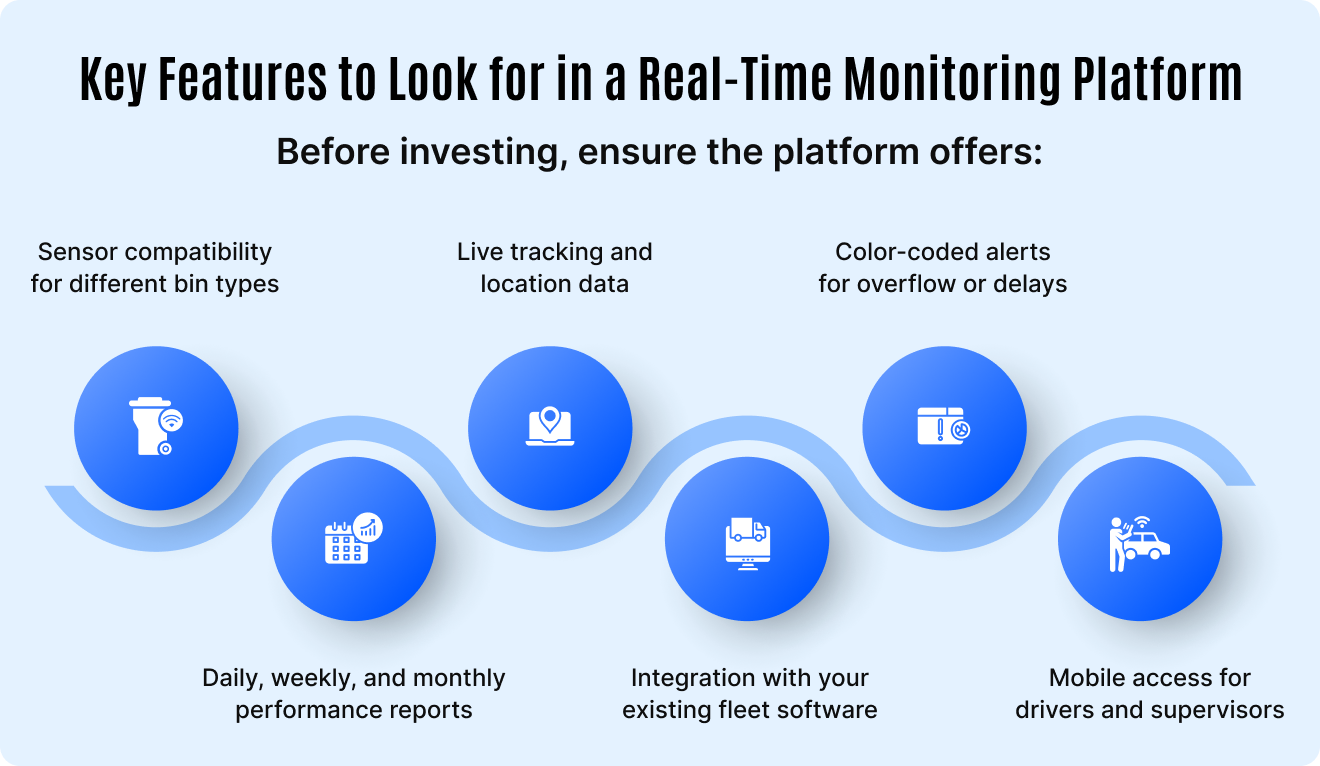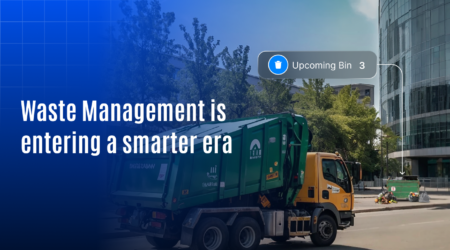How Cities Are Improving Waste Management in US Through Real-Time Monitoring

Across the US, waste volumes are rising, routes are expanding, and citizen expectations are higher than ever. According to the EPA, the United States generates over 292 million tons of municipal solid waste every year, and this number continues to grow with urban expansion.
City leaders are under pressure to deliver cleaner streets, faster pickups, and more sustainable operations all without inflating costs.
Unfortunately, most waste management systems still rely on fixed schedules, manual checks, and delayed reporting. A report by McKinsey shows that cities using outdated waste collection models experience up to 30% inefficiency in operational costs and fuel consumption. That’s where real-time monitoring and steps in. It gives cities live control over their waste operations from collection to reporting and replaces guesswork with data.
Let’s explore how real-time monitoring systems are helping municipalities take waste management to the next level.
What is real-time monitoring in waste management?
Real-time monitoring uses connected technologies to track waste activities as they happen. It includes:
- Fill-level sensors on bins
- GPS tracking on collection vehicles
- Live dashboards to view progress and issues
- Instant alerts for overflows, delays, or missed pickups
This setup gives supervisors full visibility of what’s happening on the ground and the power to act immediately.
Why traditional systems are failing US cities
Cities relying on static routes or once-a-day reports face common issues:
- Missed or duplicated collections
- Overflowing public bins
- Rising fuel and labor costs
- No visibility into on-ground delays
- Reactive rather than preventive decisions
These gaps not only increase operational costs, they frustrate residents and damage a city’s reputation.
How real-time monitoring is improving waste management in US
1. Smarter route optimization
- Trucks are dispatched only when bins are nearly full.
- Routes are adjusted in real-time to avoid traffic or delays.
- Cities save fuel, reduce wear and tear, and cut emissions.
2. Faster issue resolution
- If a bin overflows, the system sends an alert instantly.
- Missed pickups are flagged before complaints arrive.
- Teams respond proactively, not days later.
3. Lower operational costs
- Optimized collection schedules reduce fuel and manpower usage.
- Sensors minimize unnecessary trips to empty bins that aren’t full.
- Less overtime, fewer emergency cleanups.
4. Better data for smarter planning
- Historical data shows trends: high-waste zones, peak collection hours, or frequent delays.
- Cities can plan routes, shift timings, or add bins based on facts not assumptions.
5. Higher citizen satisfaction
- Cleaner streets and faster response times improve public trust.
- Real-time updates can be shared with residents through mobile apps.
- Cities show accountability with live data access.
Real example: what US cities are doing
Some US cities are already implementing real-time waste management:
- Los Angeles has added smart bins that send fill-level alerts.
- San Diego uses route tracking to avoid fuel waste and duplication.
- Houston is automating collection tasks to reduce labor dependency.
Early results include reduced missed pickups, better fleet utilization, and a 10–15% drop in fuel costs.
Before investing in any smart waste solution, it’s important to evaluate features that truly solve your city’s pain points.
What should cities look for in a real-time monitoring waste platform?
Before investing, here are key features to evaluate:
- Sensor compatibility (for different bin types)
- Real-time GPS tracking
- Live dashboards with color-coded alerts
- Historical data and custom reports
- Integration with smart city platforms
- Mobile apps for field staff
The goal is to ensure the system adapts to your city, not the other way around.
How this fits into a larger smart city vision
Real-time waste monitoring supports broader goals like:
- Environmental sustainability: Lower emissions, less fuel use
- Compliance: Meet EPA and local clean city standards
- ESG reporting: Better waste diversion and recycling tracking
- Resource management: Smart use of time, fuel, and manpower
It’s not just a tech upgrade, it’s a smarter way to run your city.
Common concerns from city leaders
Before going digital, many municipalities ask:
- “Will it cost too much?”
→ Most solutions offer quick ROI through cost savings.
- “Is it hard to implement?”
→ Many platforms integrate with existing bins and fleets.
- “What about training?”
→ Vendors often provide hands-on onboarding and 24/7 support.
Summary: small data, big change
- Waste management in US cities is evolving fast and real-time tools are leading the way.
- From route optimization to instant alerts, these systems improve service and reduce costs.
- With the right platform, any city big or small can take control of its waste operations and meet modern demands.
Smarter cities start with smarter waste systems. Don’t wait to make the switch.





